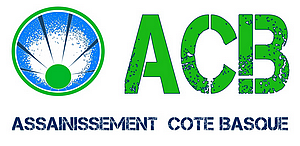Содержание
There is very little pre-planning that is required and at times the development commences without any planning. Choosing the right methodology is one of the most important decisions about your project. After all, agreeing on rules and processes can save you from arguing endlessly over how things should be done. It enables DevOps teams to push updates that improve solution efficiency. Continuous testing allows the team to fully control the process and quickly respond to emerging problems.

Team composition is stable; continuity of core development team can be maintained. Provides the ability to rapidly change system design as demanded by users. Standard systems analysis and design techniques can be fitted into this framework.
Popular Software Development Methodologies: Comparison
Waterfall development methodology saves a significant amount of time at all the phases processed and completed at a given time. Software development methodologies provide a guided approach to building software and apps. Since the early days of programming, they have been in use and remain pivotal for modern developers.. Throughout the process, end users are greatly involved in providing feedback. This reduces the risk of straying from the project goals and requirements. The Dynamic Systems Model also features detailed documentation, which is lacking in most Agile frameworks.
- By splitting huge tasks into smaller sprints, the team can make releases more often, collect more requirements and feedback, and reduce the risks of not meeting users’ expectations.
- Scrum software development methodology is by far the most flexible.
- Here’s a comparison guide that will help you rightly choose from among top 7 software development models.
- Quality isn’t just limited to the final product — it applies to every aspect of the work, ensuring a great work experience for developers, programmers, and managers.
- The challenge of estimating the resources required for a project.
Here’s a comparison guide that will help you rightly choose from among top 7 software development models. The end users are usually more involved in the process of software development in this methodology and therefore are better able to understand the functions of the system. This methodology of software development is part of the Agile Development methodologies where each individual methodology has its own principles and a unique approach. Each stage involves setting the goals and receiving feedback from a client. Moving from one phase to another in a spiral model implies completing and removing the risks before moving forward. The main focus of this methodology is the project/product itself.
Advantages Of Feature Driven Development Methodology
It’s an ideal method for small and medium-size projects but not long-term or research and development projects. It is an effective method for small projects in cases where the requirements are well defined. In this methodology, the stages are processed and completed one at a time. Its five-step process of development helps in accelerating software delivery with ease. Business necessities documentation is not compulsory for successful development.

Bringing project’s separate parts together into a test environment to be checked for bugs, other fails for meeting standard criterion is involved within mentioned stage. If you’re working on a startup, it may be better to go with Agile or Lean because of their flexibility—you can change the work scope at any time. Encourage healthy and productive discussions among team members. Kanban is even more flexible than Scrum as the team is only focused on the work which is currently in progress. Check our detailed guide on how to develop an MVP, including its benefits.
We developed a video conferencing app for online eventsEvent10x. Requirement changes are hard to implement once development is underway. Prospective costs and completion time can be evaluated before starting the project. Comprehensive steps are laid out to facilitate the development. When planning is complete, we define and document the product requirements, e.g., what functionality and interface it needs and whattech stack to choosefor implementing that.
Disadvantages Of Dynamic Systems Development Model
Agile is one of the most widely used software development methodologies. It is an umbrella term that encompasses a range of different methods and practices. These methods are based on the values as well as principles that are expressed in the Agile manifesto. Solutions are expected to evolve as cross-functional teams make use of various required practices for the need of the project during the software development life cycle. That leads to prompt as well as flexible responses to change in the process of software development.

Without a properly selected approach, it’s difficult to achieve stability in the product operation, safety and sustainability of functional features, https://globalcloudteam.com/ etc. Therefore, the Project Managers try to find the best option out of many. Agile project management methodology is also more team or squad based.
Why Choose The Agile Method?
Since then, experts discovered new approaches to improve their methods. These rapid developments have helped software engineers and developers innovate their systems. This means they do not deal with the technical aspects of software design and development. They focus more on the internal operations, and other processes involved in the project. The Capability Maturity Model Integration is one of the leading models and is based on best practices.
Many people must be involved in the decisions on the project, and the decision makers are not available on a timely basis or they are geographically dispersed. Technical requirements (e.g., response times, throughput, database sizes, etc.) are reasonable and well within the capabilities of the technology being used. Targeted performance should be less than 70% of the published limits of the technology. Data for the project already exists , and the project largely comprises analysis or reporting of the data. It is not possible to define requirements accurately ahead of time because the situation is new or the system being employed is highly innovative.
The wrong business analyst will just confuse the documentation pertaining to the process so having the right analyst with ample industry experience is very important. The Advantages of completing projects in less time mean more time to start on future projects. Clients are unable to get the software in writing from the developers thus preventing them from obtaining proof for their software. This Methodology is able to move larger projects easily with a large degree of success. The cost of changing the initial requirements at a later stage with the XP Model can be very high.
As it is a new methodology its use is not common and there are not many experts available who can get the best out of this model. Changes – Agile understands and acknowledges that things will change. They are in fact turned into a positive not only for the project’s outcome but also for the team involved. As mentioned in the summary, editing a process once it is in the testing phase is not possible.

In general, XP follows a set of values, rather than steps, including simplicity ; communication ; consistent feedback; and respect. Features are client-valued pieces of work that, according to the FDD approach, should be delivered every two weeks. Some industries have regulations that require extensive testing before a project can move to the operations phase. Technical requirements (e.g., response times, throughput, database sizes, etc.) are tight for the equipment that is to be used.
Software Development Methodologies You Can Try
Gradual implementation provides the ability to monitor the effect of incremental changes, isolate issues and make adjustments before the organization is negatively impacted. Helps to mitigate integration and architectural risks earlier in the project. Incomplete or inadequate Enterprise Software Development Company problem analysis may occur whereby only the most obvious and superficial needs will be addressed, resulting in current inefficient practices being easily built into the new system. Provides quick implementation of an incomplete, but functional, application.
Essential Tips for Managing a Software Development Team Covered in the New Article by Intetics – PR Web
Essential Tips for Managing a Software Development Team Covered in the New Article by Intetics.
Posted: Wed, 14 Sep 2022 16:04:35 GMT [source]
The DevOps method involves the development team and operations team working together to create a product. This provides a faster pace of work compared to traditional development models. The key principles of this method are software automation and bundling. This approach enables faster and more reliable testing and product release. DevOps is an approach that helps software development and IT operations function together. Usually, these two teams work in their own silos, but this methodology allows them to collaborate and foster the project implementation from the design phase to product release.
Rational Unified Process Rup Methodology
The owner’s/client’s feedback is received after the prototype is finished. Stakeholders review documented specification for choosing a suitable approach. Applicable requirements are used for the product’s architecture design with limited functionality; also for identifying approaches to be applied based on the design document specification . It implicates identifying goals, demands eliciting, transforming facts, diagnosing issues related to the current project, recommending positive building. While analysis it is created requirements in order the scope of work to be defined.
The Most Common Software Development Methodologies
Nonetheless, nearly all are using some subset or combination of the ones discussed here. Once you complete a stage of the software development process, you generally can’t go backward — at least not without a huge negative impact on your budget and/or schedule. This software development model concentrates on the development portion of the process.
High-Risk projects have benefited from this methodology especially as the requirements of the business can be subject to change and these changes can be made to the software with the Spiral Method. Only those systems and designs that one can slot into modules can benefit from the Rapid Application Development process and this is not practical for all kinds of software development. The major disadvantage in this process is that this method is not practical for projects on a small budget.
JAD methodology takes a large amount of time as it requires significant planning and scheduling effort on the part of the project development team. This software development mode effectively produces large amounts of high-quality information in a short period of time. It does not appreciate too many modifications in the project as it easily disturbs the existing workflow of the entire software development process.
The approach has its roots in the Toyota Production System and Lean Manufacturing that allowed Toyota to become one of the world’s top auto-makers. During these meetings, the team will look back at the work they’ve completed during the iteration, discuss their missteps, and suggest improvements for the next Sprint. + 2.5x lower risk of a project failure compared to the Waterfall model.

